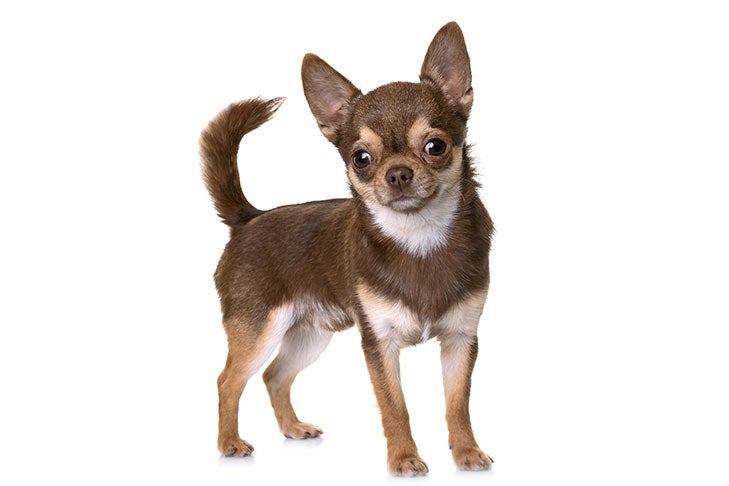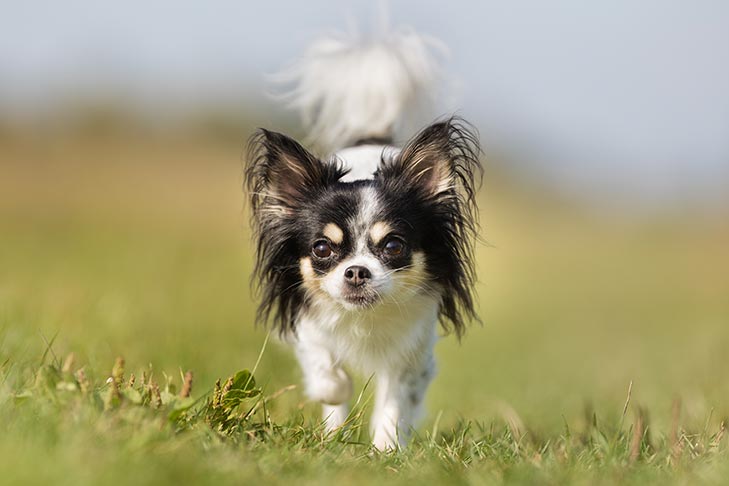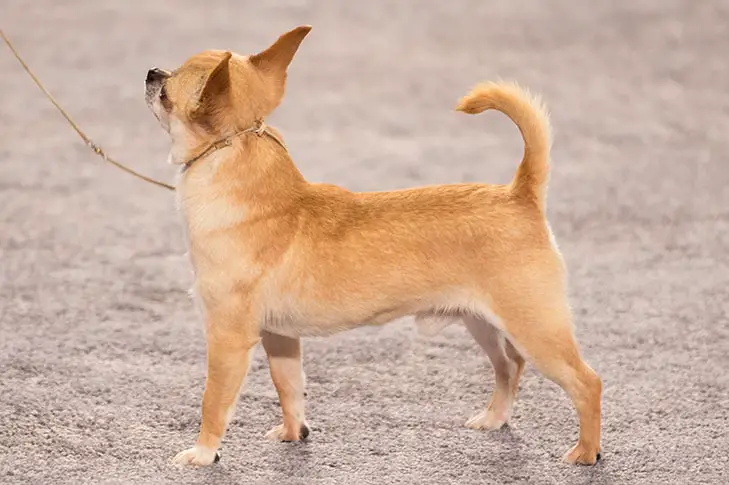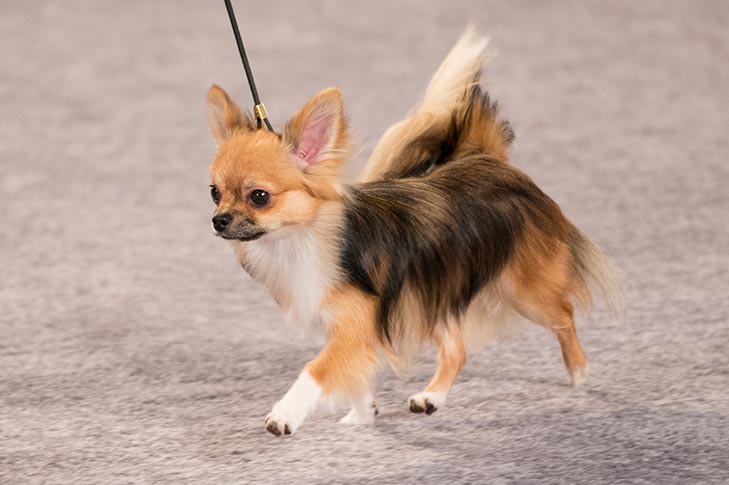The Chihuahua is a tiny dog with a huge personality. A national symbol of Mexico, these alert and amusing “purse dogs” stand among the oldest breeds of the Americas, with a lineage going back to the ancient kingdoms of pre-Columbian times. The Chihuahua is a balanced, graceful dog of terrier-like demeanor, weighing no more than 6 pounds. The rounded “apple” head is a breed hallmark. The erect ears and full, luminous eyes are acutely expressive. Coats come in many colors and patterns, and can be long or short. The varieties are identical except for coat. Chihuahuas possess loyalty, charm, and big-dog attitude. Even tiny dogs require training, and without it this clever scamp will rule your household like a little Napoleon. Compact and confident, Chihuahuas are ideal city pets. They are too small for roughhousing with kids, and special care must be taken in cold weather, but Chihuahuas are adaptable’¿as long as they get lots of quality time in their preferred lap.
Chihuahua
Average sizes and life
expectancy of the breed.
Height
5-8 Inches
Weight
Not exceeding 10lbs
Life Expectancy
14-16 years
Breed Traits & Characteristics
About the Breed

Owning a dog is not just a privilege; it’s a responsibility. They depend on us for, at minimum, food and shelter, and deserve much more. When you take a dog into your life, you need to understand the commitment that dog ownership entails.
 Health
Health
The majority of Chihuahuas are healthy little dogs, but there are some genetic issues that can affect the breed. You should choose your dog from a breeder who routinely does genetic health screenings on all breeding stock to ensure that the puppies they produce are as genetically sound as possible. Some of the issues that can possibly affect the Chihuahua include potential heart problems (patent ductus arteriosus, mitral valve disease), eye disease, and patellar luxation (loose kneecaps). Idiopathic epilepsy is also known to occur in the breed.
Recommended Health Tests From the National Breed Club:
- Patella Evaluation
- Cardiac Exam
- Ophthalmologist Evaluation
 Grooming
Grooming
 Exercise
Exercise
 Training
Training
 Nutrition
Nutrition
History
Likenesses of Chihuahua-like dogs decorate the artifacts of lost civilizations around the world. Trading among ancient cultures was more widespread than commonly assumed, so it is no surprise that similar dog types took root in far-flung places. How the Chihuahua type first came to the peoples of Mexico, however, is a secret of prehistory. We do know that when the Toltecs held sway in Mexico about a thousand years ago, their breed of choice was the Techichi, a larger, heavier ancestor of today’s Chi.
The Aztecs conquered the Toltecs in the 12th century. Historians credit the Aztecs with refining the Techichi into a smaller, lighter dog. By the time Spanish conquistadors toppled Aztec civilization in the 1500s, the Techichi was so integral to Aztec culture it was considered one of Montezuma’s fabled treasures, once presumed lost forever after the conquest of Cortez.
But the hardy little dogs lived on in remote villages and, in the mid-1800s, when Americans began to take an interest in the breed, they found many specimens in the State of Chihuahua. So it was that this survivor of two lost civilizations gained worldwide fame as the Chihuahua. The first AKC-registered Chihuahua, a little guy named Beppie, was recorded in 1908.
The famous bandleader Xavier Cugat did much to popularize Chihuahuas in the 1940s and 50s. More recently, these natural performers stole the show in “Beverly Hills Chihuahua,” “Legally Blonde,” and “Sex and the City.” The minor-league baseball team of El Paso, Texas, is named the Chihuahuas.





